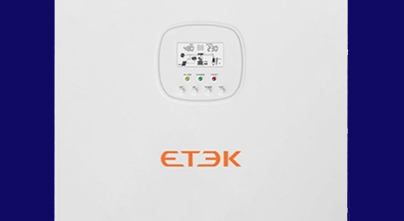In the realm of solar energy systems, solar inverters stand as a crucial component, bridging the gap between the direct current (DC) produced by solar panels and the alternating current (AC) required to power our homes and businesses. Understanding the lifespan of these inverters is not only essential for system planners and installers but also for homeowners and investors looking to make the most of their solar power investment. This article delves into the various elements that influence how long solar inverters last, providing a comprehensive overview of this critical aspect of solar technology.

Quality of Components and Manufacturing
Premium Materials: High-quality solar inverters are built with durable components. For instance, the use of robust circuit boards, reliable capacitors, and efficient heat sinks can significantly enhance the inverter's longevity. These materials are better equipped to handle the continuous electrical stress and temperature fluctuations within the inverter.
Stringent Manufacturing Standards: Reputable manufacturers adhere to strict quality control processes during production. This includes precise soldering, thorough testing of electronic components, and proper assembly. Inverters produced under such conditions are less likely to experience premature failures due to manufacturing defects.
Operating Conditions
Temperature Extremes: Solar inverters are sensitive to temperature. In hot climates, excessive heat can degrade the performance and lifespan of the inverter. Prolonged exposure to high temperatures can cause components to expand and contract, leading to solder joint failures and accelerated wear of electronic parts. Conversely, in extremely cold environments, the inverter's lubricants and plastics may become brittle, affecting its mechanical functions.
Humidity and Moisture: High humidity levels can introduce moisture into the inverter, leading to corrosion of metal parts and short circuits. In areas with frequent rain or high humidity, proper enclosure and ventilation design are crucial to protect the inverter from water damage and ensure its long-term operation.
Dust and Debris: In dusty or dirty environments, the accumulation of dust and debris on the inverter's cooling fins and internal components can impede heat dissipation. This can cause the inverter to overheat, reducing its efficiency and shortening its lifespan. Regular cleaning and maintenance are necessary to prevent such issues.
Power Capacity and Usage
Overloading: Operating the solar inverter at or near its maximum power capacity for extended periods can put excessive strain on its components. This can lead to overheating and premature failure. It is essential to size the inverter appropriately for the solar panel array to ensure it operates within a safe power range.
Cyclic Loading: Frequent on-off cycling of the inverter, such as in systems with intermittent solar power generation or in areas with significant cloud cover, can also contribute to wear and tear. Each power-up and shutdown cycle subjects the components to electrical and mechanical stress, gradually reducing their lifespan.
Maintenance and Service
Regular Inspections: Routine visual inspections of the inverter can help detect early signs of problems, such as loose connections, damaged cables, or abnormal noises. Prompt identification and resolution of these issues can prevent more severe failures down the line.
Firmware Updates: Manufacturers often release firmware updates to improve the performance and address potential bugs in the inverter's software. Keeping the inverter's firmware up to date can enhance its efficiency and stability, potentially extending its lifespan.
Professional Servicing: Periodic professional servicing by qualified technicians can involve more in-depth checks, such as testing the electrical parameters, cleaning the internal components, and replacing worn-out parts. This proactive approach to maintenance can ensure the inverter operates optimally and lasts as long as possible.
In conclusion, the lifespan of a solar inverter is influenced by a multitude of factors, ranging from the quality of its components and manufacturing to the operating conditions, power usage patterns, and maintenance practices. By carefully considering these aspects and implementing appropriate measures, it is possible to maximize the lifespan of solar inverters, ensuring the continued efficient operation of solar energy systems and a better return on investment in renewable energy.
GET A QUOTE